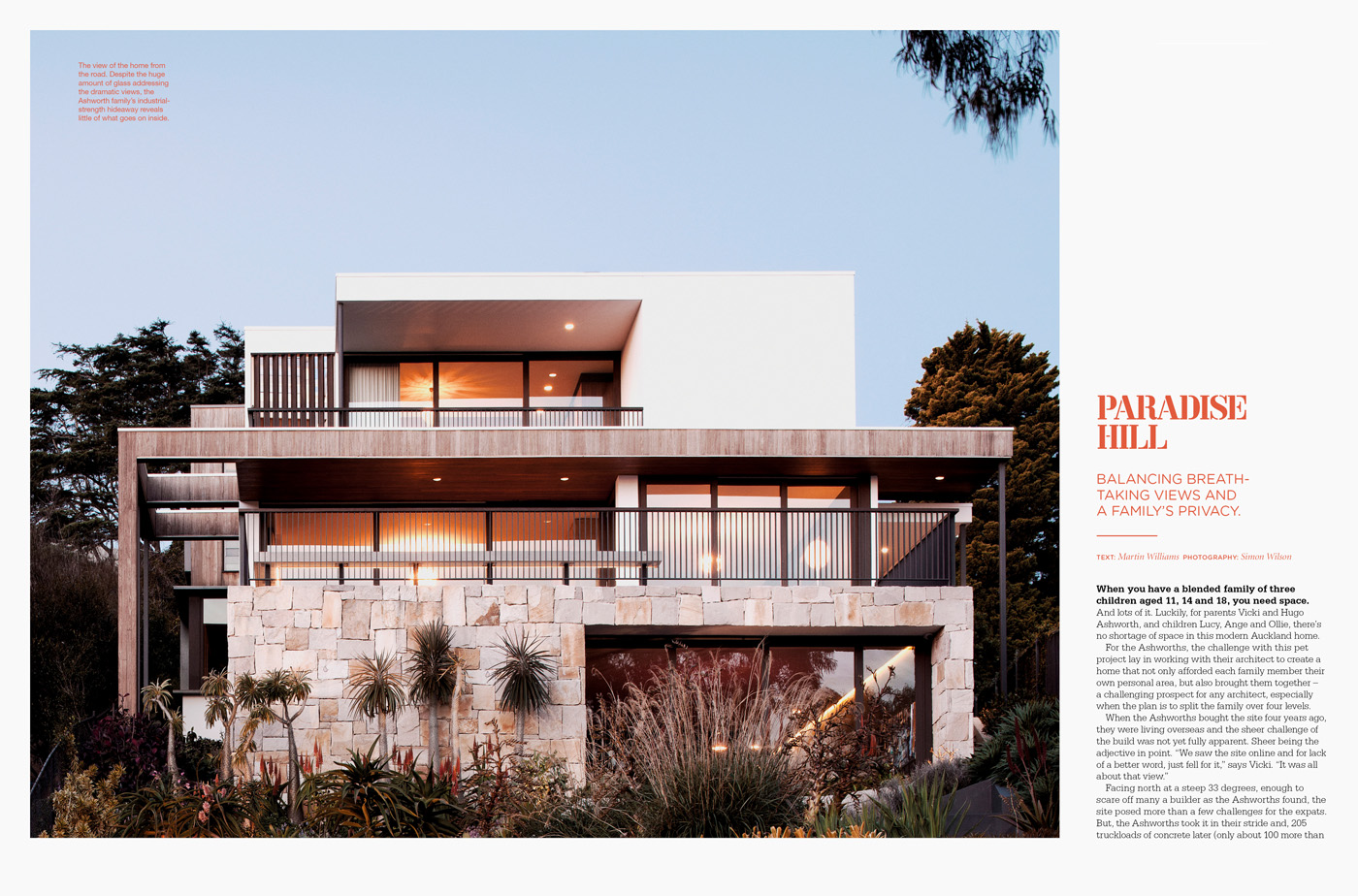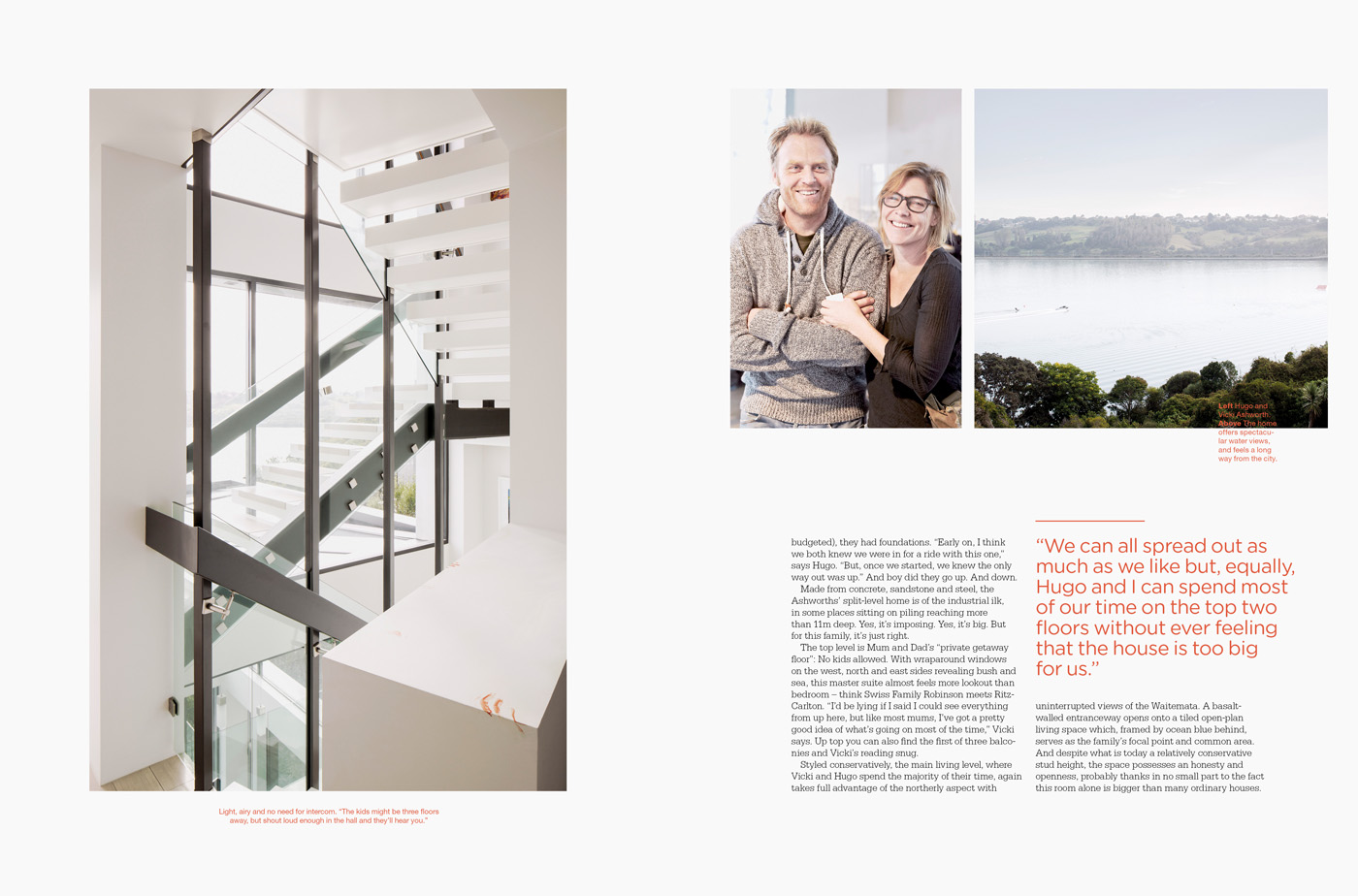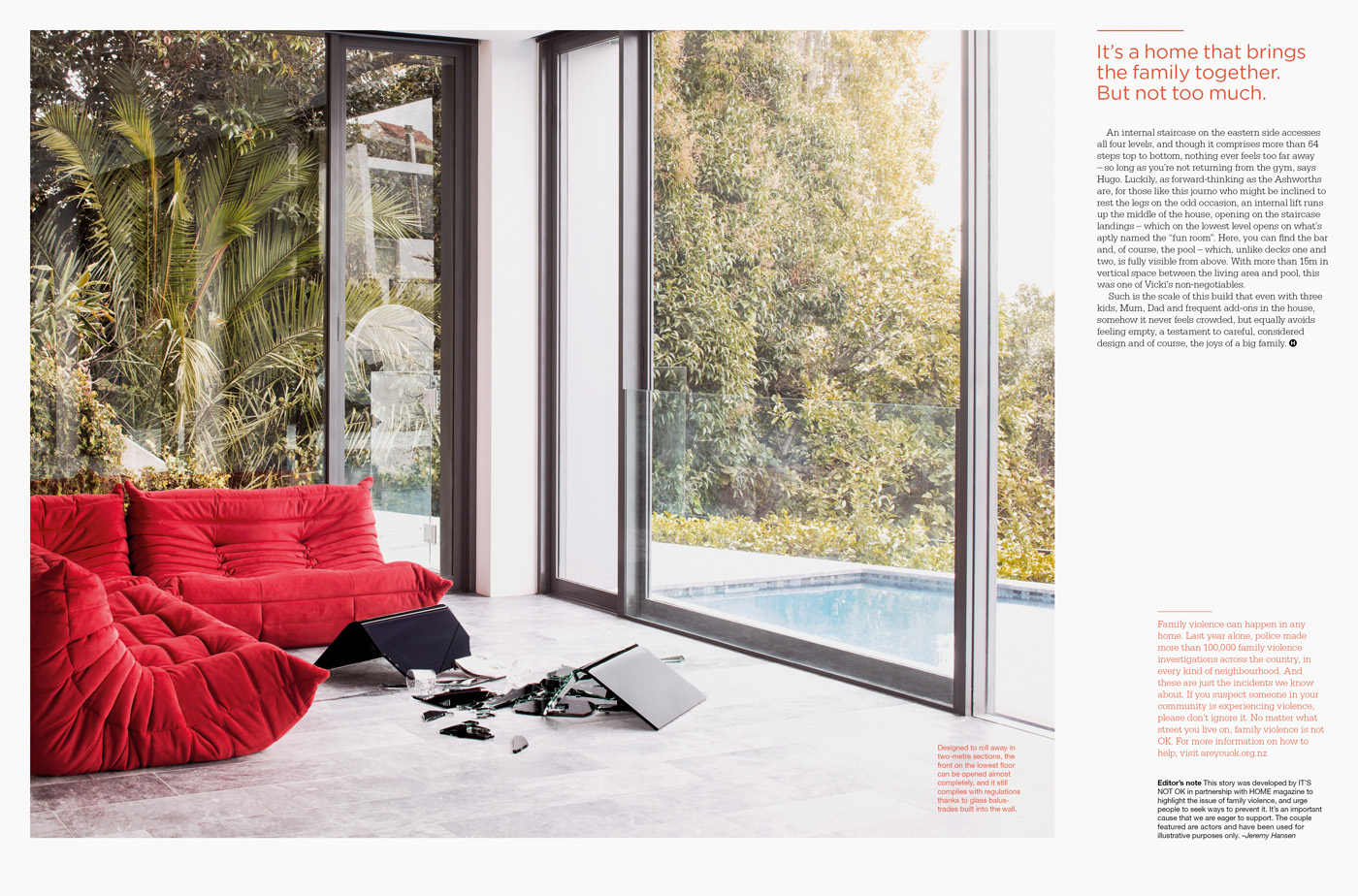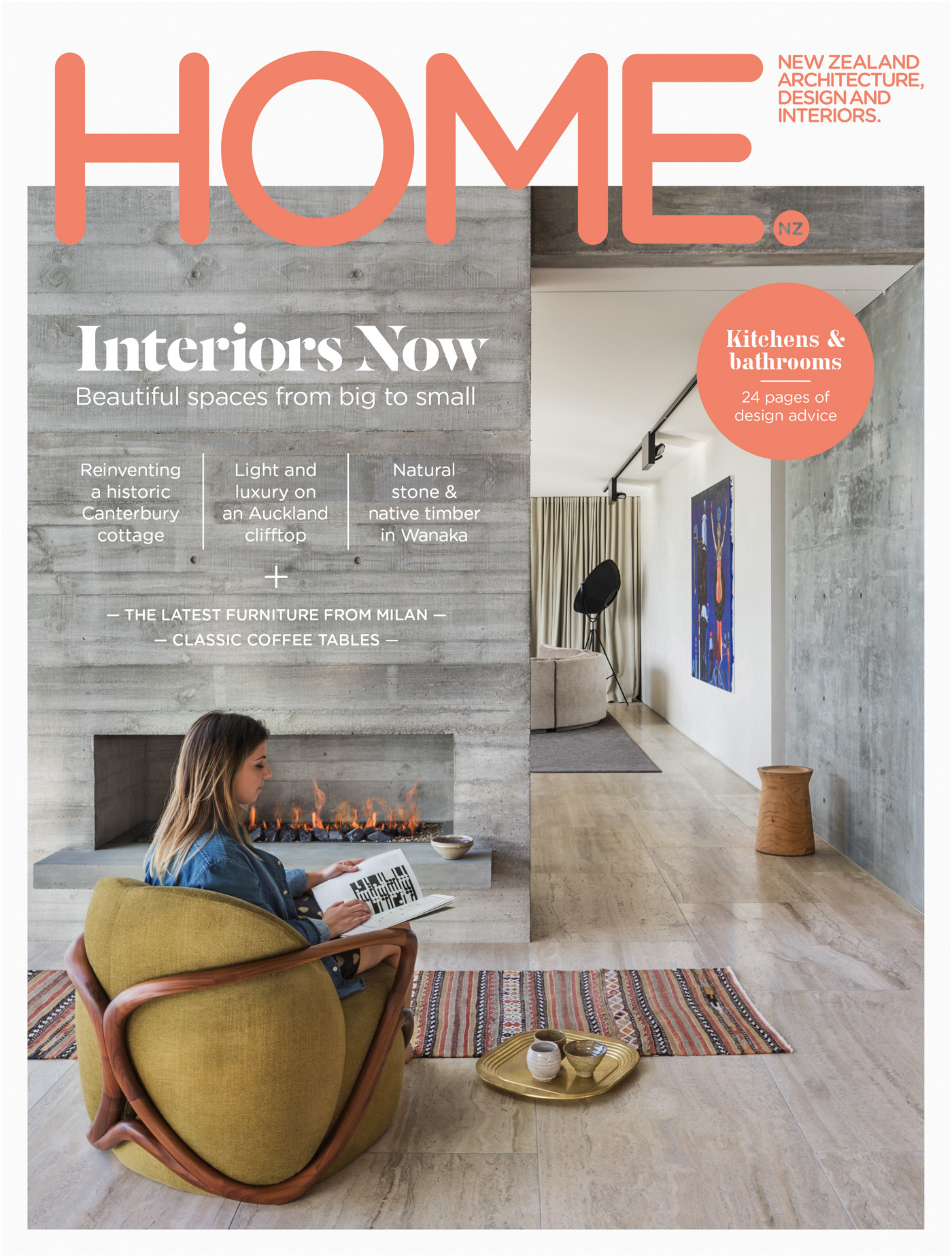Notice anything amiss in your new issue of HOME?
In it, we’ve teamed up with IT’S NOT OK, the Campaign for Action on Family Violence, to create a feature to draw attention to this important issue.
The story we’ve created looks, at first glance, like a home you’d normally see in our pages.
Then things start to go almost imperceptibly wrong: in the image below, there’s a small bloodstain near the stairs. Meanwhile, the text reads just as a normal story in HOME would, discussing the owners, their children and their plans for the house. (The couple in the photograph are actors; Simon Wilson photographed interiors in an Auckland home and we combined these with an exterior image of another residence).
In the next spread, a little more subtle chaos, with a tipped-over barstool, and evidence of a smashed vase.
Then, in the last spread, the sense of violence in the home becomes a little more obvious. Meanwhile the story sails on, almost obliviously, as if it’s trying to keep the happy family narrative on track. The note in red at the end explains the magazine’s intent in running this feature.
There are several ideas behind this feature. We are aiming to correct the perception that domestic violence is confined to lower socio-economic groups. The reality is it can happen in any New Zealand home.
In fact, the New Zealand Violence Against Women study found that 26 percent of women who live in a home with a household income of over $100,000 per year have experienced physical or sexual violence from an intimate partner.
The study also found that one in four women who have completed a university degree have experienced physical or sexual violence from an intimate partner.
Our feature was designed to point out that family violence can occur as easily in high-income households, and that we all have a responsibility to act if we sense something is wrong.
“I’ve encountered many women living in beautiful homes who were feeling suicidal because they couldn’t see a way to escape their abuse,” says Jill Proudfoot, the client services director at anti-violence group Shine (a partner of IT’S NOT OK). “If their abusive partner holds a position of power in the community, it’s even harder to leave and to be believed. A lot of these women considered leaving their homes to be too great a risk to their family. Their loyalty often makes them put their partner’s reputation ahead of their own safety.”
Murray Edridge is the deputy chief executive of community investment at the Ministry of Social Development. He says the signs of domestic violence may be subtle – there won’t always be broken furniture, but there may be financial abuse, or controlling what someone wears, who they see and where they go.
Our feature mimics some of the clues that might suggest family violence may be occurring in a home. The slightly unsettling feeling this creates is what we might feel if we were in such a home, and its occupants were pretending everything was normal.
What would you do?
The most important thing to remember about the IT’S NOT OK campaign is that it offers advice about how to help – and also how perpetrators of domestic violence can reach out find ways to break the cycle of abuse.
We hope our small contribution to the admirable work of IT’S NOT OK can help raise awareness of this issue. If you know someone who you think might be suffering domestic violence, it is vital that you look for ways to help.
WATCH Editor Jeremy Hansen appeared on TV3’s Newsworthy with Shine’s Jill Proudfoot to discuss the campaign. Their interview with Samantha Hayes and David Farrier starts at 8.38 during the broadcast (after the first ad break), which can be accessed at this link. You can see the feature in print in our June/July 2015 issue, on newsstands now (that’s the cover below).











